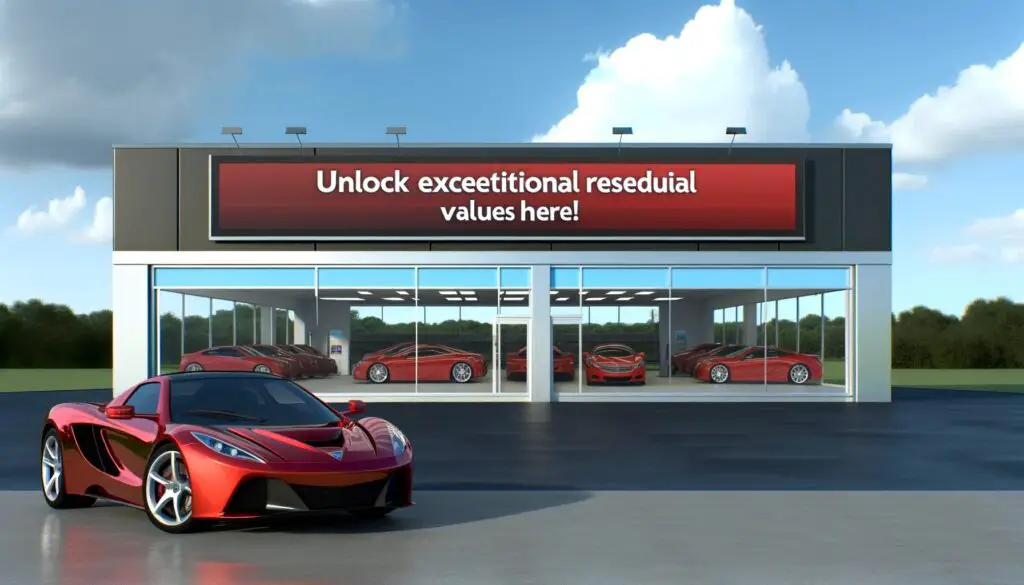In the realm of modern technology, adaptive lighting systems stand at the forefront, offering a transformative approach to illumination. As the world progresses towards sustainable and efficient solutions, understanding the intricacies of adaptive lighting becomes paramount. In this comprehensive guide, we delve into the depths of the adaptive lighting system market, exploring its evolution, functionality, benefits, market overview, implementation challenges, case studies, future prospects, and more.
Understanding Adaptive Lighting Systems
What Are Adaptive Lighting Systems?
Adaptive lighting systems represent a paradigm shift in the realm of illumination, characterized by their ability to dynamically adjust brightness, color, and direction based on environmental conditions and user requirements. These systems utilize a combination of sensors, controllers, light sources, and communication networks to optimize lighting parameters in real-time.
Types of Adaptive Lighting Technologies
- Dynamic Dimming: Enables automatic adjustment of light intensity based on ambient light levels or occupancy.
- Color Tuning: Allows customization of light color temperature to suit different tasks, environments, or circadian rhythms.
- Directional Control: Facilitates the redirection of light beams to specific areas or objects, enhancing visibility and reducing glare.
Components of Adaptive Lighting Systems
Sensors
Sensors play a pivotal role in adaptive lighting systems, gathering data on ambient light levels, occupancy, motion, and other environmental parameters.
Controllers
Controllers act as the brain of adaptive lighting systems, processing sensor data and issuing commands to adjust light settings accordingly.
Light Sources
LEDs (Light Emitting Diodes) serve as the primary light sources in adaptive lighting systems, offering energy efficiency, longevity, and versatility.
Communication Networks
Communication networks, such as wireless protocols or wired connections, facilitate seamless data exchange between sensors, controllers, and light fixtures.
How Do Adaptive Lighting Systems Work?
The functionality of adaptive lighting systems revolves around a cyclical process encompassing detection, analysis, decision-making, and adjustment phases. Sensors detect changes in the environment, controllers analyze the data, make decisions based on predefined algorithms, and adjust light settings accordingly.
Case Studies/Examples in Use
- Smart Street Lighting: Cities worldwide are adopting adaptive lighting solutions to enhance safety, reduce energy consumption, and minimize light pollution.
- Commercial Buildings: Offices and retail spaces utilize adaptive lighting to create dynamic environments, improve employee productivity, and enhance customer experience.
Benefits of Adaptive Lighting
Energy Efficiency and Savings
Adaptive lighting systems offer substantial energy savings compared to traditional lighting technologies by optimizing light output based on actual requirements, resulting in reduced electricity consumption and lower utility bills.
Comparison with Traditional Lighting Systems
Traditional lighting systems often operate at full brightness regardless of actual lighting needs, leading to unnecessary energy wastage and higher operating costs.
Enhancing Safety and Comfort
Applications in Automotive and Street Lighting
Adaptive lighting enhances road safety by dynamically adjusting headlights to improve visibility in varying weather conditions and mitigate glare for oncoming drivers.
Role in Workspace and Residential Environments
In office buildings and homes, adaptive lighting systems create comfortable and productive environments by aligning lighting levels with occupant preferences and task requirements.
Environmental Impact
Reduction in Light Pollution
Adaptive lighting systems minimize light pollution by directing light precisely where it’s needed, reducing skyglow, and preserving the nocturnal environment for wildlife and stargazers.
Contribution to Sustainable Development Goals
By promoting energy efficiency, reducing carbon emissions, and minimizing light pollution, adaptive lighting systems align with global sustainability initiatives and contribute to a greener future.
Market Overview
Current Market Trends
The adaptive lighting system market is witnessing robust growth driven by increasing awareness of energy conservation, advancements in LED technology, and government initiatives promoting smart infrastructure development.
Innovations Shaping the Market
Technological advancements, such as the integration of AI algorithms, IoT connectivity, and predictive analytics, are revolutionizing the capabilities of adaptive lighting systems, enabling greater efficiency, customization, and automation.
Major Players in the Adaptive Lighting System Market
Leading companies in the adaptive lighting system market include industry stalwarts and innovative startups, each offering a unique portfolio of products and solutions tailored to diverse customer needs.
Market Segmentation
- By Technology: Segmented based on the underlying technologies employed, including sensor types, control algorithms, and communication protocols.
- By Application: Categorized according to the specific use cases, such as automotive, residential, commercial, and industrial applications.
Future Market Predictions
The future of the adaptive lighting system market is characterized by continued innovation, expanding application areas, and growing adoption driven by urbanization, sustainability goals, and advancements in smart city infrastructure.
Emerging Technologies
Next-generation sensors, AI-driven algorithms, and decentralized control architectures are poised to revolutionize the capabilities and performance of adaptive lighting systems, unlocking new possibilities for energy savings, customization, and user experience.
Potential Market Growth Areas
Emerging trends, such as Li-Fi (Light Fidelity) communication, LiDAR-based sensing, and human-centric lighting design, present lucrative opportunities for market expansion and differentiation.
Implementation and Challenges
Installation and Integration
Steps for Setting Up an Adaptive Lighting System
- Site Assessment: Conduct a thorough assessment of the lighting environment, including existing fixtures, wiring, and infrastructure.
- Component Selection: Choose appropriate sensors, controllers, and light sources based on the specific requirements and objectives of the project.
- Installation: Deploy sensors, controllers, and light fixtures in accordance with design specifications and safety regulations.
- Configuration and Calibration: Configure the system parameters, calibrate sensors, and test functionality to ensure optimal performance.
- Integration: Integrate adaptive lighting systems with existing building management systems or IoT platforms for centralized control and monitoring.
Technical Challenges
Compatibility Issues
Integration challenges may arise when attempting to interface adaptive lighting systems with legacy infrastructure or third-party solutions, necessitating careful planning and customization to ensure seamless interoperability.
Maintenance and Troubleshooting
Periodic maintenance and proactive troubleshooting are essential to address hardware failures, software glitches, and performance degradation, ensuring uninterrupted operation and maximizing system lifespan.
Cost Analysis
Initial Investment vs. Long-Term Savings
While the initial cost of implementing adaptive lighting systems may be higher compared to traditional lighting solutions, the long-term savings in energy consumption, maintenance costs, and operational efficiency offer a compelling return on investment.
Subsidies and Financial Incentives
Government incentives, rebates, and tax credits aimed at promoting energy efficiency and sustainability initiatives can significantly offset the upfront costs of deploying adaptive lighting systems, making them more economically viable for businesses and municipalities.
Case Studies
Successful Implementations
Urban Adaptive Lighting Projects
Cities like Amsterdam, Singapore, and Barcelona have implemented large-scale adaptive lighting initiatives to improve energy efficiency, enhance safety, and create visually appealing urban environments.
Automotive Industry Examples
Automotive manufacturers integrate adaptive lighting systems into vehicles to enhance driver visibility, improve road safety, and comply with regulatory requirements, thereby raising the bar for automotive lighting performance and innovation.
Lessons Learned
Challenges Overcome
Through real-world deployments and iterative improvements, stakeholders in the adaptive lighting ecosystem have overcome various challenges, including interoperability issues, stakeholder engagement, and regulatory compliance, paving the way for widespread adoption and market growth.
Feedback from End-Users
User feedback and satisfaction surveys highlight the tangible benefits of adaptive lighting systems, such as improved visibility, reduced glare, and enhanced comfort, underscoring their value proposition and driving continued investment and innovation.
The Future of Adaptive Lighting
Advancements on the Horizon
Next-Generation Sensors and AI Integration
Advancements in sensor technology, coupled with AI-driven algorithms, will enable adaptive lighting systems to anticipate user preferences, adapt to changing environmental conditions, and optimize energy efficiency with unprecedented precision and responsiveness.
Smart City Applications
In the context of smart city development, adaptive lighting systems will play a pivotal role in creating connected, sustainable urban environments that prioritize energy conservation, public safety, and quality of life for residents.
Potential Impact on Society
Changes in Energy Consumption Patterns
The widespread adoption of adaptive lighting systems will contribute to a significant reduction in energy consumption, lowering carbon emissions, and mitigating the environmental impact of urbanization and industrialization.
Enhancements in Public Safety and Well-Being
By improving visibility, reducing light pollution, and enhancing overall comfort and safety, adaptive lighting systems will foster more livable, resilient communities and promote social equity and inclusivity in the built environment.
Frequently Asked Questions (FAQs)
What Makes an Adaptive Lighting System “Adaptive”?
An adaptive lighting system dynamically adjusts brightness, color, and direction based on environmental conditions, user preferences, and operational requirements to optimize energy efficiency, enhance visibility, and improve comfort and safety.
Can Adaptive Lighting Systems Be Used in Any Type of Building?
Yes, adaptive lighting systems are highly versatile and can be deployed in various settings, including residential, commercial, industrial, and outdoor environments, to address diverse lighting needs and objectives.
How Do Adaptive Lighting Systems Impact Energy Bills?
Adaptive lighting systems reduce energy consumption by optimizing light output based on actual requirements, resulting in lower electricity bills and operational costs compared to traditional lighting technologies.
Are There Any Government Regulations Affecting the Adaptive Lighting System Market?
Yes, government regulations and standards pertaining to energy efficiency, lighting performance, and environmental sustainability influence the design, deployment, and adoption of adaptive lighting systems, driving market dynamics and industry innovation.
How Can Consumers Choose the Right Adaptive Lighting System for Their Needs?
Consumers should consider factors such as lighting requirements, budget constraints, scalability, interoperability, and regulatory compliance when selecting an adaptive lighting system, consulting with industry experts and evaluating product features and specifications to make informed decisions.
Conclusion
In conclusion, adaptive lighting systems represent a transformative solution for addressing the evolving needs and challenges of modern illumination, offering unparalleled flexibility, efficiency, and performance across diverse applications and environments. As we navigate the dynamic landscape of the adaptive lighting system market, embracing innovation, collaboration, and sustainability will be key to unlocking its full potential and illuminating a brighter future for generations to come.
Call to Action
We encourage stakeholders across industries and sectors to embrace adaptive lighting technologies, harnessing their power to create safer, more sustainable, and more resilient communities, while also fostering economic growth, environmental stewardship, and social equity. For further reading and resources on adaptive lighting systems and related topics, we invite you to explore the links and references provided below.





